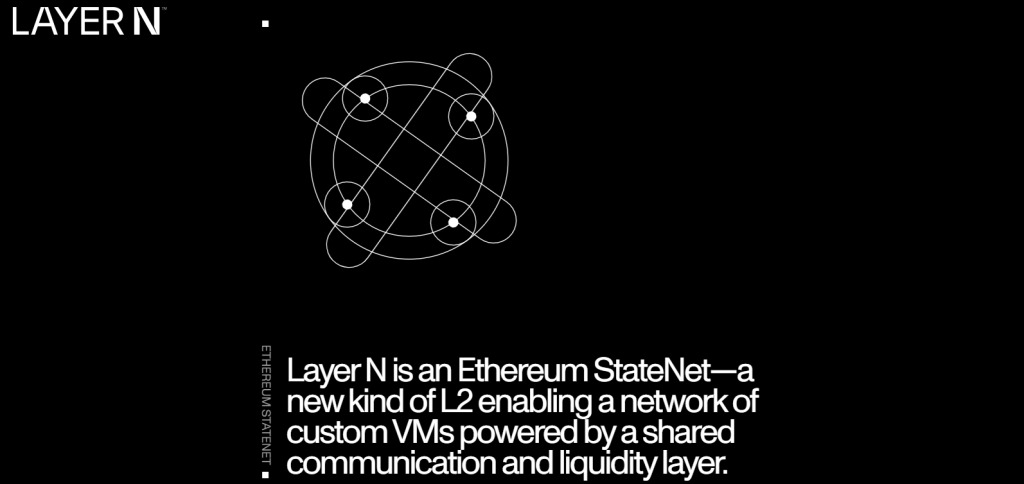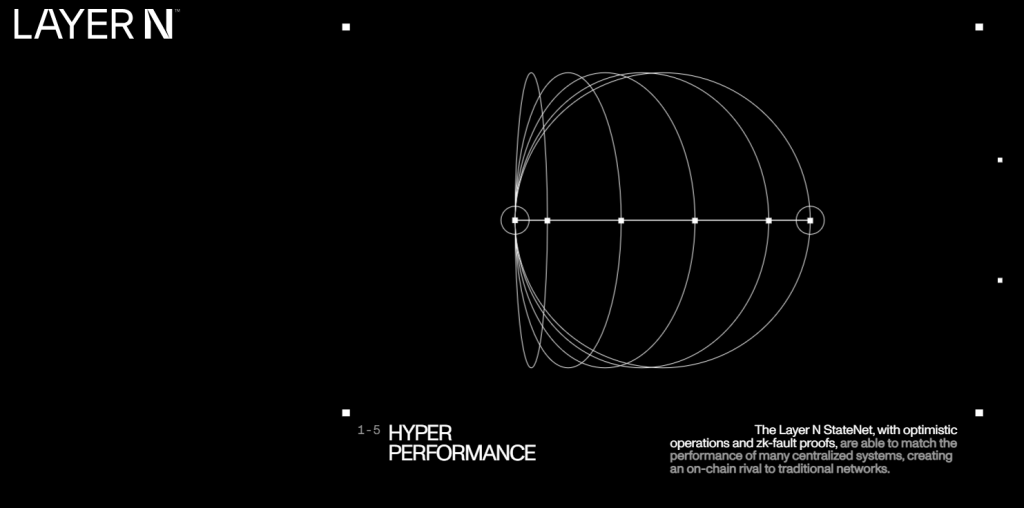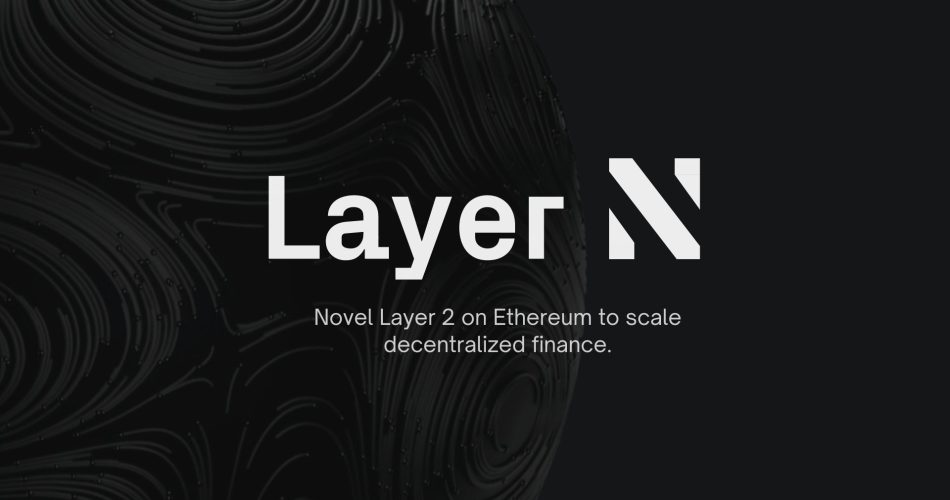The blockchain revolution faces a critical roadblock: scalability. Ethereum, a leading platform for smart contracts, struggles with high fees and slow transaction speeds, hindering its ability to support mass adoption. Layer N emerges as a beacon of hope, aiming to unlock Ethereum’s potential by scaling financial applications to unprecedented levels. This expanded edition delves deeper into the heart of Layer N, providing a comprehensive understanding of its architecture, features, potential impact, and current state of development.

Architectural Deep Dive
At its core, Layer N operates as a StateNet, a network of customizable rollup nodes interconnected through a shared state and liquidity layer. This innovative design fosters several key advantages:
- Optimized Performance: Each rollup node focuses on processing transactions for a specific set of applications (XVMs), enabling tailored optimizations for performance and efficiency.
- Resource Allocation: The shared state and liquidity layer efficiently allocates resources based on network demand, preventing bottlenecks and ensuring smooth operation.
- Security: By inheriting the security of the Ethereum mainnet, Layer N guarantees the validity of transactions without sacrificing speed.
Hybrid Rollup Mechanism:
Layer N employs a hybrid rollup mechanism to achieve both speed and security:
- Optimistic Rollups: Transactions are processed rapidly off-chain, significantly reducing gas fees and processing times.
- zk-Fault Proofs: Periodically, cryptographic proofs called zk-SNARKs are generated to verify the validity of transactions, ensuring the security of the entire network.
Application-Specific Virtual Machines (XVMs):
Layer N introduces XVMs, a revolutionary concept that empowers developers to build highly customized applications. Each XVM operates on its own virtual machine, allowing for:
- Tailored Functionality: Developers can design XVMs with specific features and optimizations suited to their applications, fostering innovation and efficiency.
- Increased Performance: By offloading processing to dedicated XVMs, the network avoids bottlenecks and ensures smooth performance for each application.
- Interoperability: XVMs can communicate and interact with each other through the shared communication layer, enabling seamless integration and composability within the Layer N ecosystem.
Shared Communication Layer:
The shared communication layer forms the backbone of Layer N’s composability and interaction potential:
- Seamless Communication: XVMs can exchange data and assets directly, fostering collaboration and innovation within the ecosystem.
- Composable Applications: Developers can build applications that leverage functionalities from multiple XVMs, creating complex and powerful DeFi solutions.
- Shared Liquidity: The shared liquidity layer enables efficient utilization of available funds across different applications, improving capital efficiency and reducing transaction costs.
Benefits and Potential Impact:
- Enhanced Scalability: Layer N promises significantly faster and cheaper transactions compared to Ethereum’s base layer, potentially handling thousands of transactions per second.
- Improved Security: By inheriting security from the Ethereum mainnet and utilizing zk-SNARKs, Layer N ensures the safety and reliability of transactions while offering faster processing times.
- Developer Flexibility: XVMs empower developers with greater control and customization, opening doors for more innovative and efficient DeFi applications.
- Rich Ecosystem: The shared communication layer fosters collaboration and composability, leading to a richer and more dynamic DeFi ecosystem with endless possibilities.
Current Status and Future Outlook
Layer N is currently in its final stages of development, with a mainnet launch anticipated in late 2024. Several key milestones have been achieved, including securing funding from prominent investors and successfully completing testnet deployments. The project has garnered significant interest from the crypto community due to its unique approach and potential to revolutionize the DeFi landscape.
Layer N’s Roadmap: A Glimpse into the Future (February 2024)
While Layer N is still under development, its roadmap outlines a clear vision for the future. Here’s a comprehensive breakdown of the key stages and milestones:
Phase 1: Development and Testing (Completed Q2 2024)
- Core infrastructure development: Completed development of the StateNet architecture, optimistic rollup mechanism, and zk-SNARK integration.
- Testnet deployments: Successfully launched and tested various iterations of the network on testnets, gathering valuable data and feedback from developers and users.
- Security audits: Conducted independent security audits to identify and address potential vulnerabilities, prioritizing the security of the network.
Phase 2: Mainnet Launch (Targeted Q4 2024)
- Mainnet launch: The official launch of the Layer N mainnet, allowing developers and users to interact with the network in a real-world environment.
- XVM development: Encouragement and support for developers to build and deploy XVMs tailored to specific needs and applications.
- Initial partnerships: Collaboration with industry leaders and DeFi projects to integrate Layer N and explore its potential within their ecosystems.
Phase 3: Growth and Expansion (2025 onwards)
- Scaling solutions: Continuous development and implementation of advanced scaling techniques to maintain high performance and efficiency as adoption grows.
- Governance model: Establishment of a robust and decentralized governance model to empower the community and ensure sustainable development.
- Cross-chain interoperability: Exploration of integration with other blockchains and protocols, fostering broader adoption and composability.
- Advanced privacy features: Research and development of innovative privacy-enhancing technologies that complement Layer N’s existing security infrastructure.
Concrete Examples of Real-World Applications
While discussing hypothetical use cases paints a broad picture, it’s valuable to delve into specific examples to truly understand the tangible impact of Layer N. Here are some real-world scenarios showcasing its potential:
1. Decentralized Exchange (DEX) with Limit Orders:
Imagine a DEX built on an XVM specifically designed for high-frequency trading. This XVM enables traders to:
- Place and manage limit orders efficiently, essential for advanced trading strategies.
- Execute trades at sub-millisecond speeds, capitalizing on fleeting market opportunities.
- Enjoy significantly lower fees compared to existing DEXs due to Layer N’s scalability, making even small trades profitable.
2. Fractionalized Real Estate Platform:
Picture a platform leveraging an XVM to:
- Tokenize ownership of real estate into smaller, more digestible fractions.
- Facilitate fractional ownership and trading with fast and cost-effective transactions.
- Offer dynamic pricing and automated dividend payouts based on rental income, all transparently recorded on the blockchain.
3. Microinsurance for Farmers:
Envision a microinsurance solution built on an XVM catering to farmers:
- Offer weather-indexed insurance with premiums automatically adjusted based on real-time weather data.
- Enable near-instantaneous claims payouts triggered by pre-defined conditions, mitigating financial setbacks for farmers.
- Leverage Layer N’s scalability and low fees to provide affordable insurance to large numbers of farmers in emerging economies.
4. Supply Chain Monitoring with NFTs:
Consider a supply chain management platform using XVMs to:
- Issue NFTs representing physical goods, tracking their movement and ownership throughout the chain.
- Enable real-time visibility and data sharing among stakeholders, ensuring transparency and trust.
- Utilize Layer N’s security and immutability to guarantee the authenticity and provenance of goods, combating counterfeiting.
5. Decentralized Identity Management:
Think of a self-sovereign identity (SSI) solution powered by an XVM:
- Empower individuals to control their personal data, storing it securely on the blockchain.
- Facilitate permissioned data sharing with institutions and other individuals, without relinquishing data ownership.
- Leverage Layer N’s privacy features to ensure selective data disclosure and control over personal information.
These are just a glimpse into the diverse possibilities. Remember, Layer N is still under development, and the potential applications will continue to evolve alongside the ecosystem. Stay tuned for exciting developments and real-world implementations that unlock the true potential of this innovative technology.

Layer N’s Strategic Partnerships: Powering the Future of DeFi
Layer N’s journey towards unlocking Ethereum’s true potential isn’t a solo quest. Recognizing the power of collaboration, the project has formed key partnerships with industry leaders, paving the way for a richer and more impactful ecosystem. Let’s explore some of the prominent partnerships and their significance:
1. SushiSwap’s Susa:
A significant collaboration involves SushiSwap, a leading DEX. They’re leveraging Layer N’s technology to launch Susa, a high-speed derivatives exchange. This partnership aims to:
- Revolutionize decentralized derivatives trading: Susa promises over 100,000 transactions per second with millisecond latency, surpassing centralized exchanges in speed and efficiency.
- Boost SushiSwap’s competitiveness: Integration with Layer N enables SushiSwap to offer innovative features and attract new users seeking faster and cheaper trading experiences.
- Validate Layer N’s technology: Successful implementation of Susa serves as a real-world demonstration of Layer N’s scalability and potential for high-performance DeFi applications.
2. Founders Fund and Other Prominent Investors:
Layer N secured $5 million in seed funding from Founders Fund, a renowned venture capital firm. This investment signifies:
- Confidence from industry leaders: Backing from Founders Fund underscores the potential of Layer N’s technology and its ability to address Ethereum’s scalability challenges.
- Access to valuable resources and expertise: The partnership provides Layer N with access to the vast network and experience of Founders Fund, facilitating further growth and development.
- Increased visibility and credibility: The involvement of renowned investors attracts broader attention and fosters trust in Layer N’s vision and capabilities.
3. Decentralized Finance Protocols and Infrastructure Providers:
Layer N actively seeks partnerships with various DeFi protocols and infrastructure providers, including:
- Oracles: Collaborations with oracle providers ensure reliable and timely data feeds powering XVMs and enabling innovative applications.
- Lending protocols: Integration with lending protocols expands Layer N’s reach and utility, unlocking new use cases for asset borrowing and lending.
- Wallets and identity solutions: Partnerships with wallet and identity solutions provide seamless user experiences and foster wider adoption of Layer N-based applications.
Looking Forward
Layer N presents a compelling solution for addressing Ethereum’s scalability challenges. Its innovative architecture, combined with features like XVMs and a shared communication layer, holds immense promise for the future of blockchain technology. As the project progresses towards its mainnet launch, it’s crucial to stay informed about its development and potential impact on the DeFi ecosystem. This journey has just begun, and Layer N has the potential to unlock a new era of scalability and innovation in the blockchain world.
Layer N website: https://www.layern.com/
Documentation: https://docs.layern.com/
